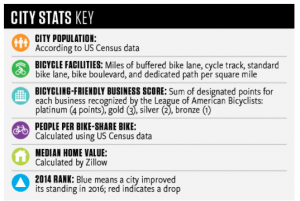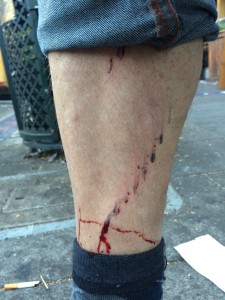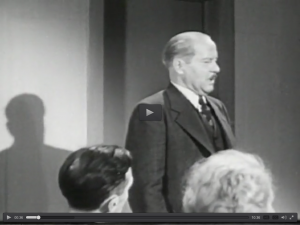All posts by Jonathan Hunt
Video: FDR’s “Four Freedoms” Speech
Late Reminder: for class Thursday 10/20/2016
Reminder
For class today, you have two tasks. Both are part of the rhetorical process of INVENTION (coming up with ideas about what to say, and appropriate arguments or strategies to use).
First, write a post that has two elements:
- exploring a potential topic idea for S3
- identifying a decision-making audience for your talk
You can update or edit this post after class–we’ll work on developing your ideas.
Second, prepare a 1-minute, 1-slide topic pitch. Let us know a little bit about what you’re interested in, why, and what audience you’d like to influence.
- 1 minute
- 1 slide
Don’t worry
If you are having trouble thinking of an appropriate topic, don’t worry! We’ll keep working on it!
Here are some things to remember:
If anything makes you think, “huh, weird” — that’s probably a good thing to investigate.
Pick something that is connected to your own interests or experience.
Sometimes people pick something because it seems like it will be easy to find lots of information. I disagree with this strategy, because it means the person is not challenging themselves. And if information is easy to find, why do we need a presentation on it? Respect yourself, respect your audience, don’t be afraid to dig.
Video of the Day: Interviewing People
I thought this video was pretty hilarious — but it does a good job of presenting some common practices in interviewing people for information about the attitudes and experiences.
Video: International Police Mountain Bike Association Competition
To Do for Class Day 16 (Thursday 10/13/2016)
There are 2 main tasks to complete for class on Thursday.
Read
In Module 3, we’re focusing on analysis for decision-makers. For class Thursday, read these two articles from the New York Times. One, “If Kant Were a New York Cyclist,” by Randy Cohen, addresses the ethics of cyclist behavior from a philosopher’s point of view.
Optional: in this 3-minute video, Randy Cohen talks about the ethics of driving.
The second, “Is It O.K. to Kill Cyclists?” by San Francisco writer Daniel Duane, examines the consequences of collisions–his focus isn’t so much the behavior of motorists, but rather the attitudes represented legal decisions about consequences for drivers.
Optional: You can watch Dan Duane talk about learning to cook in this 3-minute video. And here, he’ll show you how to open a beer with a carabiner. These have nothing to do with bicycles, but are linked her to show spoken communication.
Write
After you read the two articles, write a post for your blog.
Your post should include your thoughts about the two articles (one or both). Include in your post some connection to your own knowledge or experiences (as both Cohen and Duane do).
And, as always, a relevant image. Here’s my image:

According to these metrics, Bicycling magazine considers Chicago to be the best bike city in the US, with San Francisco in 2nd place.
Oops, one more image:

Be careful out there, folks!
Build Your Vocabulary! (1948 Instructional Film)

This film, Build Your Vocabulary (1948), shows how a bumbling citizen learns to speak effectively at a town meeting.
The 20th century was a time of great proliferation of extremely tedious instructional films, many of which have been collected by San Francisco’s great treasure, the Prelinger Archive.
To Do for Class Day 15 (Tuesday 10/11/2016)

Wow, those were some great presentations on Thursday!
As a reminder, here are the tasks due for class on Tuesday, October 11th. There are two main tasks: reflect on S2 and read selections from David Byrne’s book Bicycle Diaries. The readings are more in-depth than what we’ve looked at so far, so be sure to leave some time for them. It’s no fun to try to read these in a hurry.
Victoria, Ariel, Amanda, and Sam will give their S2 presentations–sorry about the delay!
S2 Reflection
For everyone else, don’t forget to post a reflection on your S2 to your blog.
A basic reflection (in other words, a grade of B) discusses your sense of the strengths and weaknesses of your S2 presentation, and outlines a plan for improving. It includes specific, concrete details and examples to illustrate your points.
A strong reflection (grade of A) does what a B reflection does, but goes further:
- It includes specific reference to course materials (using the reflection to demonstrate your knowledge of course material)
- It refers to another student’s work (showing your ability to derive learning from peer work)
- It includes an appropriate image (showing your ability to communicate in visual as well as verbal forms)
- it is about 500 words in length
Reading David Byrne
David Byrne is best known as the front man of ’80s band The Talking Heads. YouTube it. Since then, he’s has become known as an artist, urbanist, and social critic.
Read two selections from his book Bicycle Diaries (2009). Start with the one on San Francisco, then read the one on Istanbul.
This link takes you to the reading page.
Reflecting on David Byrne
Post to your blog a response or reaction to David Byrne’s writing. Your response should have two parts and should include and image:
- Byrne mentions a lot people, places, and things. Google one of them. It could be Tacqueria Cancún, A Confederacy of Dunces, Topkapi Palace, or Binondo. Oh wait, Binondo is in the “Manila” chapter–you’ll have to get the book if you want to read about that. In your response, explain a little bit about what the person, place, or thing is. Byrne doesn’t really do that.
- Respond in whatever way you think is appropriate–but you should try to use Byrne’s thinking as a launching point… use his ideas as a starting place to explore your perspective on the world.
Reminder: for class Tuesday 10/4
A reminder!
Please refer to the previous post to prepare for Tuesday’s class.
One additional task we discussed in class:

Do one search on Fusion (USF’s library search tool), using keyword from your S2 topic. On your blog, post a discussion of one source you find (include information about the source).
Example: this post from Matthew Mata.
